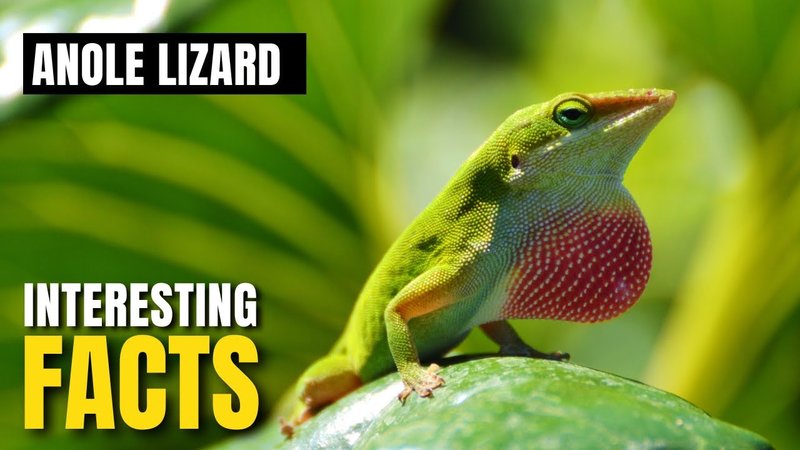
You might be wondering what makes anoles so special. Well, they are not just any lizard. Anoles are known for their ability to change color and their unique behaviors. They’ve become popular pets for many, and their quirky habits can be downright entertaining to observe. Let’s explore the common myths and facts about the anole lizard, ensuring you have all the information you need to appreciate these charming reptiles.
Myth 1: Anoles Can Change Their Color Like Chameleons
You’ve probably heard that anole lizards can change color. This isn’t entirely a myth, but it’s also not as impressive as it sounds. Unlike chameleons, which are famous for their dramatic color shifts, anoles have a more limited ability. They can change from light to dark shades but usually within a certain range of their base color.
Why do they change color, you ask? Well, it’s primarily for temperature regulation and camouflage. When it’s warmer, an anole might become lighter to reflect sunlight. Conversely, in cooler conditions, they often darken. This behavior can be compared to wearing lighter clothes on a hot summer day versus a cozy sweater in winter. So, while they can change color, it’s not the same level of transformation you see in chameleons.
Myth 2: Anoles Are Only Found in the Tropics
Many people assume that anole lizards are only tropical creatures. Sure, they are abundant in warmer regions, but that’s not the whole story! Anoles are actually widespread across the southeastern United States. In fact, the green anole is quite common in places like Florida and the Carolinas. They can thrive in various habitats, from lush forests to suburban backyards.
Interestingly, some species of anoles have adapted well to different climates and environments. This versatility plays a huge role in their survival. So next time you spot one, don’t just think of tropical rainforests; remember that they might just be enjoying the sun right in your neighborhood!
Fact 1: Anoles Use Their Dewlaps to Communicate
Here’s a fun fact: anoles have a special feature called a dewlap—a colorful flap of skin under their throat. You’ll often see them puffing it out, especially during mating season or when defending their territory. Imagine it like a peacock displaying its feathers! This little display helps anoles communicate with each other.
For instance, when a male anole wants to attract a female or warn off other males, he will extend his dewlap while bobbing his head. This visual language is crucial for their social interactions. So next time you see one flashing its dewlap, know that it’s not just showing off; it’s trying to send a message!
Myth 3: Anoles Are Dangerous to Humans
This is a big misconception. Anoles are completely harmless to humans. They lack the venomous bites seen in some lizard species. In fact, most anoles are shy and will scurry away when approached. They might look like tiny dragons with their long tails and sharp claws, but they’re far from being dangerous.
If you do find an anole in your home, it’s not there to terrorize you! They can actually be beneficial, as they eat bugs like flies and mosquitoes. Think of them as little natural pest controllers. So, if you happen upon one, consider it a friend rather than a foe!
Fact 2: Anoles Have a Unique Climbing Ability
Have you ever noticed how anoles seem to defy gravity? These little lizards are expert climbers, thanks to their amazing foot structure. Their toes have tiny adhesive pads that help them grip surfaces like tree bark and smooth walls. It’s similar to how geckos climb, but anoles have their own style.
This ability to scale smooth surfaces allows them to escape predators and hunt for food. Plus, it’s just fascinating to watch! Imagine the thrill of seeing an anole dart up a tree trunk with ease—their climbing skills are nothing short of impressive.
Myth 4: Anoles Only Live for a Few Months
You might be surprised to learn that anoles can live much longer than a few months. Depending on the species, anoles can live between 4 to 8 years with proper care in captivity. In the wild, their lifespan might be shorter due to predators and environmental factors, but they still stick around longer than many people think.
In captivity, providing a healthy diet, the right habitat, and regular veterinary care can help extend their life. So if you’re considering getting one as a pet, be prepared for a long-term commitment, just like you would for any other animal!
Fact 3: Their Diet Is Varied
Anoles are not picky eaters. They enjoy a diet that includes insects like crickets, flies, and mealworms. In the wild, they are insectivores, meaning they primarily eat insects. When kept as pets, it’s important to provide them with a balanced diet to keep them healthy.
You could think of an anole’s meal plan like our own—variety is key! Some pet owners supplement their anole’s diet with fruit or specially formulated lizard food to ensure they get all the necessary nutrients. Just like people, a well-rounded diet is crucial for their health and longevity.
As we’ve explored, anoles are more than just colorful little lizards. They come with their own set of myths and facts that can sometimes confuse us. From their color-changing abilities to their harmless nature, understanding these charming creatures helps us appreciate them even more.
Next time you see an anole basking in the sun or darting up a tree, remember the truths behind the myths. These little lizards play a vital role in our ecosystems, and they deserve our admiration. Whether you’re a budding herpetologist or simply someone who enjoys observing wildlife, there’s always something new to learn about the incredible world of anole lizards!

